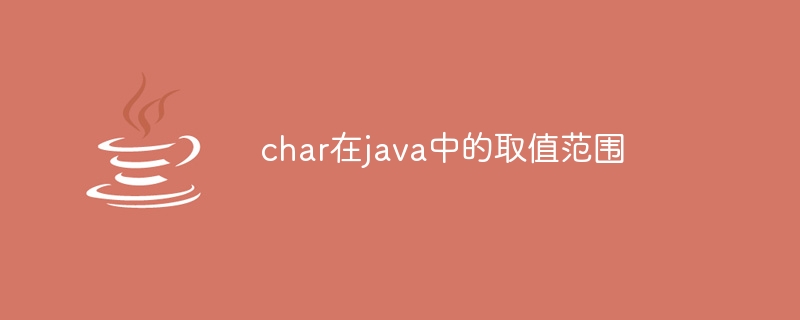
The char type in Java represents a 16-bit Unicode character, with a value ranging from U 0000 to U FFFF, covering all characters in the Unicode character set. This type uses one or more 16-bit code units to store Unicode code points and can represent any Unicode character in the range, including letters, numbers, and other symbols.

The value range of char in Java
The char type represents a 16-bit Unicode character in Java. Its value range is determined by the Unicode character set, covering all characters from U 0000 to U FFFF.
Unicode Character Set
The Unicode character set is an international standard that defines characters for nearly all written languages in the world. Unicode code points consist of one or more 16-bit code units, each code unit corresponding to a character.
char type
The char type in Java is a basic data type, which represents a Unicode character. A char variable can store any Unicode character, including letters, numbers, punctuation marks, and special symbols.
Value range
The value range of the char type is 0 to 65535 (0x0000 to 0xFFFF) because it uses 16-bit storage. This means that the char type can represent all Unicode characters in this range.
Representation
Char values can be represented using single quotes or backslash escape sequences. For example:
Example
The following code shows the use of the char type:
<code class="java">char letter = 'A'; char number = '5'; char symbol = '#';</code>
In Java, the value range of the char type covers all Unicode characters, from U 0000 to U FFFF. This allows it to store and process a wide range of text data from different languages and cultures.
The above is the detailed content of The value range of char in java. For more information, please follow other related articles on the PHP Chinese website!
 Which is more difficult, c language or python?
Which is more difficult, c language or python?
 What are the data storage methods?
What are the data storage methods?
 What is the cmd command to clean up C drive junk?
What is the cmd command to clean up C drive junk?
 How to type the less than or equal symbol in Windows
How to type the less than or equal symbol in Windows
 Usage of distinct in SQL
Usage of distinct in SQL
 The difference between footnotes and endnotes
The difference between footnotes and endnotes
 What is the difference between a router and a cat?
What is the difference between a router and a cat?
 Linux adds update source method
Linux adds update source method




